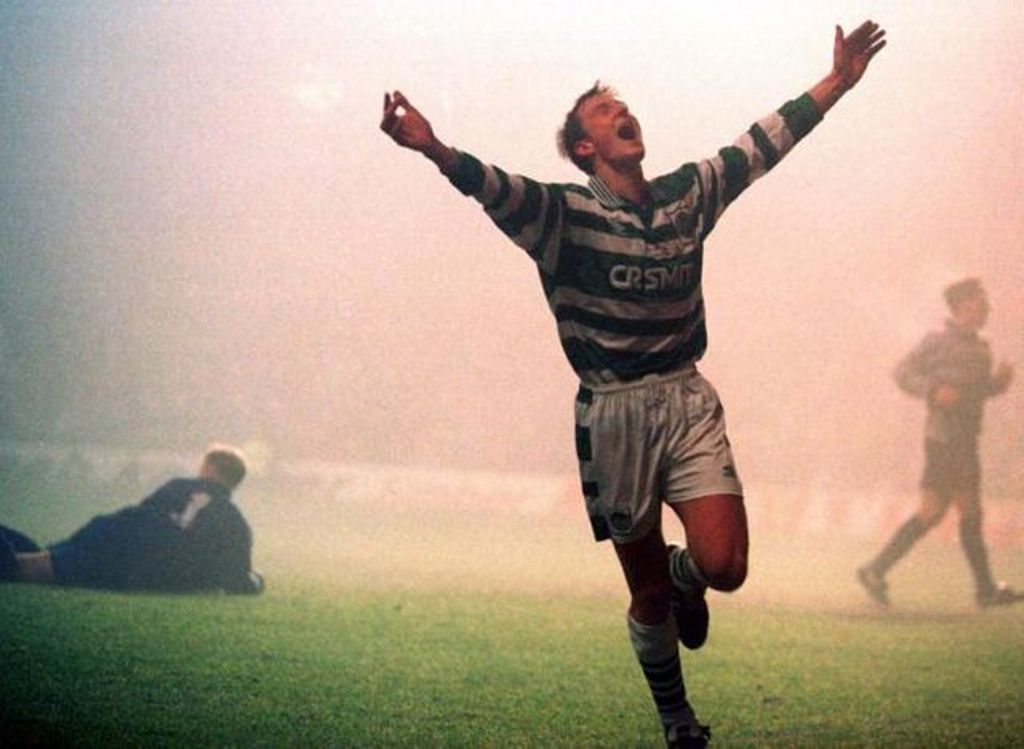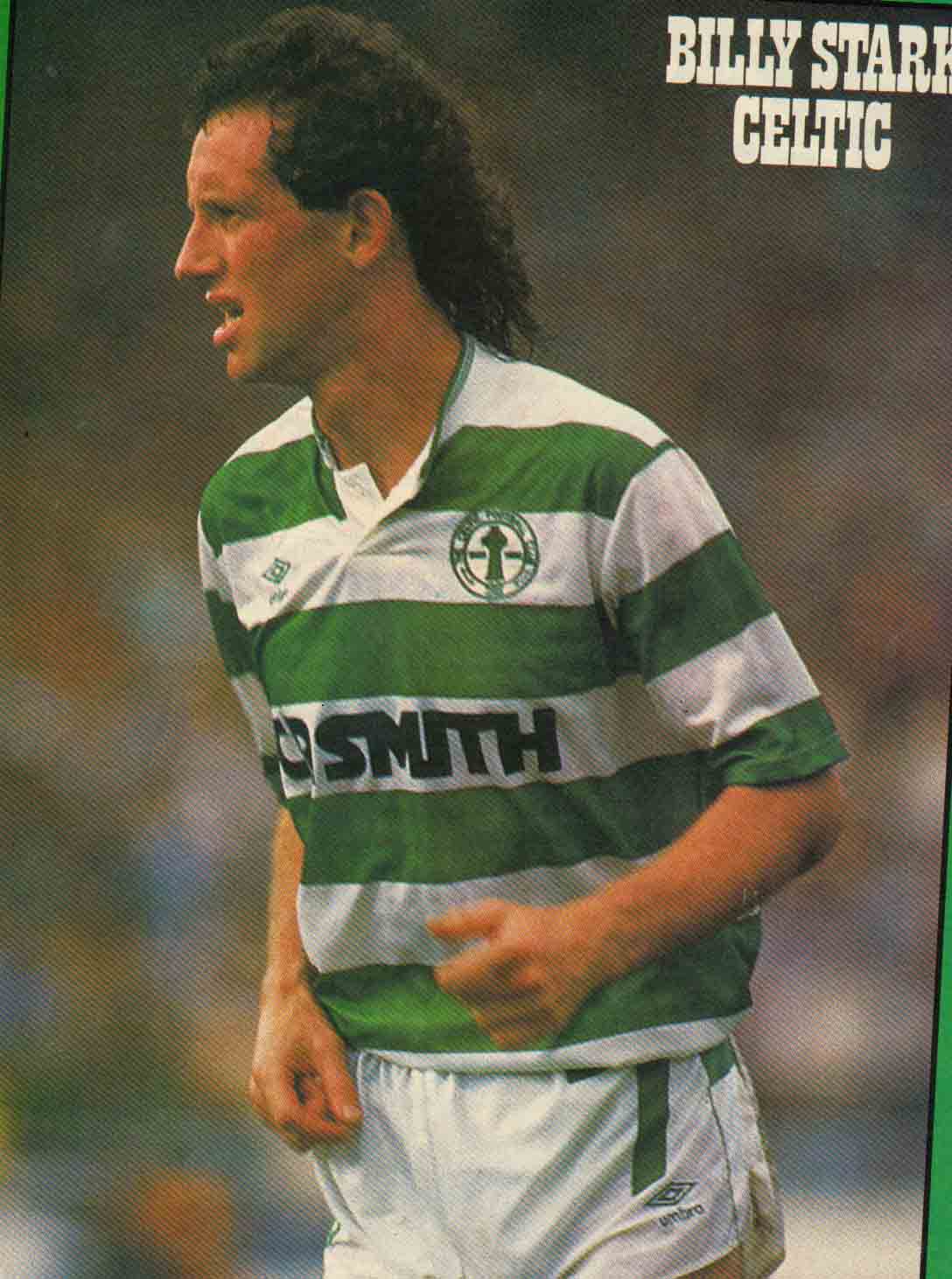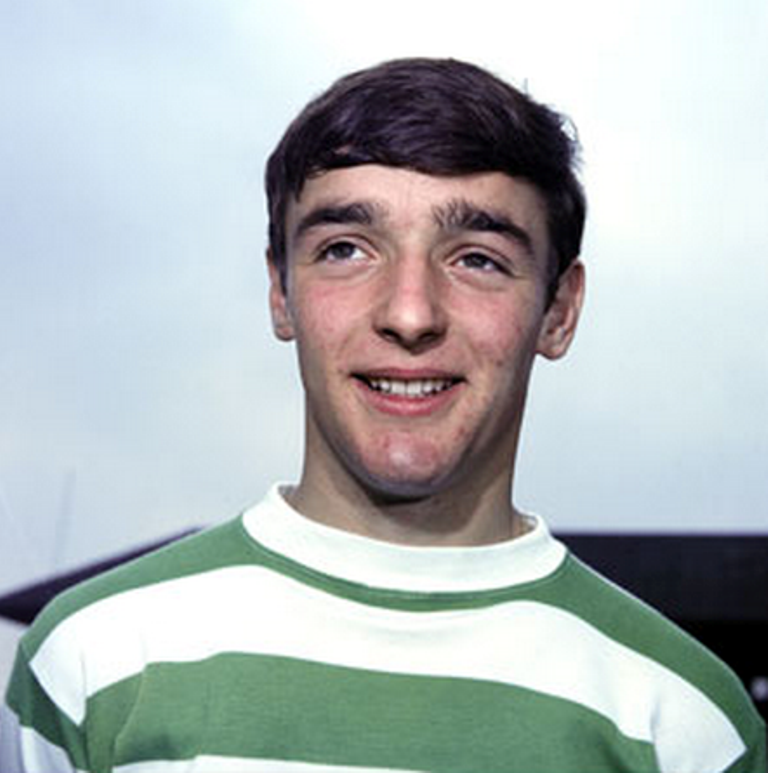The summer of 1980 was to be the turning point not only in his career
but in his life when he married Rosemary in Saint Francis church in the
Gorbals, where legend has it that the organist played the Celtic song
as the happy couple came down the aisle and the Daily Record showed a
photo of hundreds of well wishers around the church, many perilously
perched on walls to get a better viewpoint.
In that summer of 1980 freedom of contract was brought into Scottish
football for the first time allowing players to move on without seeking
the consent of their club. Tommy Burns was out of contract and by the
end of July he had still not agreed terms with Celtic. McNeill took a
hard line with Burns (and also Roddy McDonald), stating firmly that he
would not play them in the first team as he was attempting to build a
side and that as they could leave at short notice it would deny him
time to find replacements before the new season. Liam Brady had
recently left Arsenal for Juventus and there was speculation that they
would come in for Tommy as a replacement but this did not materialise
and just before the start of the season Burns and McDonald signed new
deals. At last Celtic fans were to see the best of Tommy Burns.
My father worked in Cammell Lairds shipbuilders in Liverpool for
several months in the autumn of 1980 and only occasionally managed up
for Celtic’s games. Around October, after watching his first match for
some time, he was not as impressed with the teenage sensation Charlie
Nicholas who had just broken into the team than he was the new mature
Tommy Burns who had by now learned when to keep possession and when to
release a through ball to become the team’s main playmaker. He added a
flair to the Celtic team that had not been seen for some time and he
had perfected the ‘Tommy shuffle’, a notable trick whereby he would
lift his left leg over the ball and follow through with his right foot
leaving a bemused defender in his wake which was quite an innovative
move in the early 1980’s.
For the next three seasons Tommy maintained a remarkable level of
consistency in a Celtic jersey and was instrumental in the title
winning sides of 1981 and 1982 and who came desperately close in 1983
when an injury to Burns after New Year could be attributed to the loss
of the title. During this period Celtic could boast one of their
greatest ever forward lines in Provan, McStay, McGarvey, Burns and
Nicholas. In 1983 the side broke up when McNeill acrimoniously moved to
Man City, Nicholas and George McCluskey also moved southwards in moves
which decimated the team. For the next four years Tommy’s career moved
along in fits and starts as Davie Hay stamped his own personality as
new Celtic manager. Perhaps lacking McNeill’s motivational skills,
Burns also with Provan, McGarvey and MacLeod all found difficulty in
producing their best form for Hay’s Celtic on a regular basis. There
was even a period in the autumn of 1985 when Hay persisted in playing
him in defence at left back in what was gross waste of talent, although
it is worth stating that when Burns was reinstated into the midfield in
February Celtic went on a long unbeaten run, which culminated in them
edging past Hearts by the narrowest of margins in May 1986.
With McNeill back as manager for the centenary season it was noticeable
that Tommy had lost some of his pace and although always in the squad
he was not always a regular starter. After the success of their
centenary Celtic began to fall behind Rangers and McNeill allowed Tommy
to move to Kilmarnock in December 1989 although he later admitted that
had he known Roy Aitken would depart shortly after then Tommy would not
have been allowed to go. In a friendly match against Ajax later that
month Tommy Burns played his last game for Celtic. When he was
substituted it was appropriate that he ran over to the jungle for one
final time and in a fitting gesture threw his boots to the crowd.
In 1994 when Fergus McCann surveyed his new empire and decided on a
change of manager there was only one man the Celtic fans would fully
trust and that was Tommy. Statistics don’t tell the full story of how
close his Celtic side came to breaking Rangers domination at a time
when Celtic were fighting a war on two fronts, attempting to balance
the need for success on the park with having to build an expensive new
stadium in the process. His record in the transfer market was excellent
balancing the big names the fans craved (Van Hooydonk, Thom, Cadete, Di
Canio, and Stubbs) with bargain buys (McKinlay, McNamara, Hughes, and
Weighorst). He had off the park difficulties also and he was required
to contend with several tragedies in the shape of the Celtic Boys Club
court case, the murder of young Celtic player Lawrence Haggart and the
murder of young Celtic fan Mark Scott, all of which no doubt affected
him personally. However Fergus was nothing if not ruthless and despite
coming desperately close to winning the title on two occasions, Fergus
perceived Tommy as unsuccessful and Tommy had to go.
His story did not end there and he returned to Parkhead in a coaching
capacity in 2000 working for Dalglish, O’Neill and Strachan in various
roles and, especially in more recent times, he was partly responsible
in Celtic’s success as part of the club’s management team.
Tommy’s illness was not easy to accept. A man of great humility, his
Catholic faith was a great strength for him in difficult times and when
the end came there was genuine sorrow from all parts of Scottish
society. As Celtic fans we grieve his passing but that pales into
insignificance compared to the pain and sorrow suffered by Rosemary and
his close family. The visions of grief that the media brought from
Gordon Strachan, Billy Stark, George McCluskey and Ally McCoist will
stay in the mind forever and Davie Provan’s assessment that Celtic had
came a poor third in Tommy’s life behind his faith and his family was
absolutely correct.
Tommy Burns was perhaps the last of a generation of young boys who
played in back courts and streets all day long and dreamed of playing
for their favourite team. In the obituaries written after his passing
many of them put the accent on the poverty of the Calton area in which
the young Tommy was raised and yet Tommy Burns was enriched by the love
of his family and of the community that embraced him, a community which
has all but gone given the massive social changes to the area’s
infrastructure since the 1960’s. Boys who sign for Celtic today are
less likely to come from areas such as Govan, Gorbals and the Calton,
rich hunting grounds for potential Celtic players in past generations,
and more from other privileged, affluent areas of the City and beyond.
After having read many articles about Tommy Burns recently I think it’s
fair to say that no one in Celtic’s history has attended more schools,
youth organisations, charities and supporters club functions on behalf
of Celtic than Tommy Burns. It’s also said that everyone has a story to
tell about Tommy and I’m no different. He attended a charity
presentation on behalf of the Knights of St Columba in Renfrew around
1986 and he was mortified to discover that he was to be presented with
crystal wine glasses for taking the trouble to come. A few months later
my Father and I were outside Celtic park one Saturday morning after the
weekly ritual of delivering his Celtic pools payment when the team came
out to board the bus to travel to a match and there was Tommy. My
Father asked him how he liked his wine glasses and he replied boldly
that he would be drinking champagne from them that very night.
Heartened by those sentiments we then travelled to Love Street that
afternoon and cheered Celtic on to the most dramatic of league title
wins in which Tommy Burns played an integral part. It was clear that he
believed we would win the title that day despite all the odds being
against Celtic.
He may be gone from us now but like the other Celtic greats he will
never be forgotten. Tommy Burns gave Celtic supporters so many special
memories over the years and yet I will always smile when I recall those
green patent shoes back in Govan in 1981.




